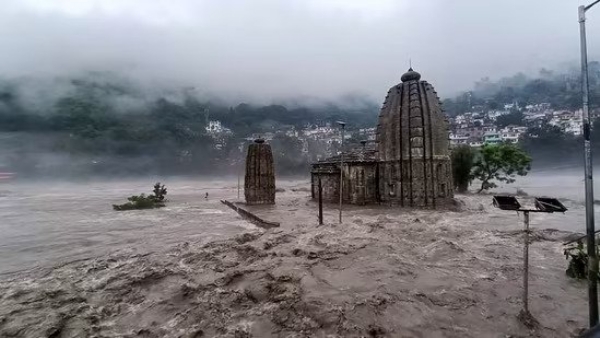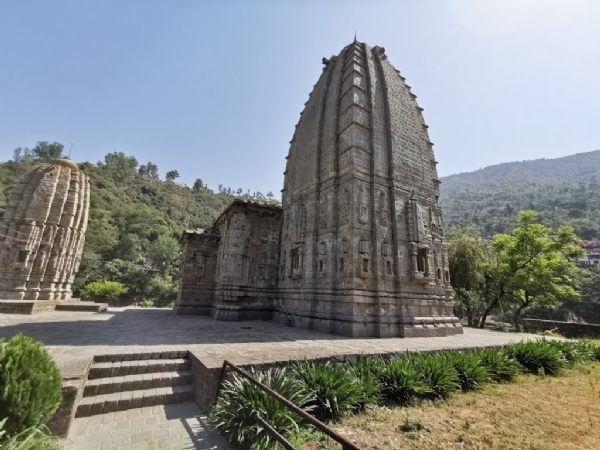Panchvaktra Temple: You've definitely seen this temple but do you know its story?
The most prominent festival celebrated at the Panchvaktra Temple is Mahashivaratri.
Total Views |
In the recent week, owing to the horrifying floods along the Himalayas, people have seen numerous videos of the havoc that these floods have caused. Among the numerous videos, one video remarkably captured people's attention for a good reason. I'm sure you all must have come across the video of the historic Panchvaktra Temple of Himachal Pradesh's Mandi being attacked by devastating floods but the structure stood intact to the impact of the waterflow. Do you know the story of Mandi's Panchvaktra Temple?

The main deity worshipped in the Panchvaktra Temple is Bhagwan Shiva. Devotees from various parts of the country visit the temple to seek the blessings of Shiva. It is believed that offering prayers at this temple fulfills the desires and wishes of the devotees. The most prominent festival celebrated at the Panchvaktra Temple is Mahashivaratri.
Various myths exist along localites about the temple that describe the story of this grand temple. It is believed that the temple was built by the Pandavas during their time in exile. However, why particularly this spot? Even that has an interesting reason that is believed among devotees. It is believed that Goddess Parvati, an incarnation of Goddess Shakti, performed intense penance and meditation to win Bhagwan Shiva's hand in marriage and finally the two married each other at this place.
Besides, the term "Panchvaktra" refers to the five peaks or faces. Bhagwan Shiva is often depicted with five faces, representing his various aspects and roles. These faces are associated with different functions of creation, preservation, destruction, obscuration, and bestowal of grace. The Panchvaktra symbolizes Bhagwan Shiva's omnipresence and his ability to encompass multiple forms.
Architecture of Panchvaktra
The Panchvaktra Temple showcases the distinctive Himachali architectural style. This style is known for its intricate woodwork and craftsmanship. The temple's structure primarily consists of stone and wooden elements, reflecting the traditional building techniques of the region.

The temple's most striking feature is its elaborate wooden carvings. Intricate patterns, motifs, and figures are intricately carved on the wooden beams, pillars, and doorways of the temple. These carvings often depict mythological scenes, deities, animals, and floral patterns, showcasing the skilled craftsmanship of the local artisans.
The temple's roof is particularly noteworthy. It features five peaks or "Panchvaktra," from which the temple derives its name. These peaks rise from the main structure and create a distinct silhouette against the sky.
The Panchvaktra Temple complex comprises the main shrine dedicated to Bhagwan Shiva, along with other smaller shrines and structures. The complex is typically surrounded by a courtyard and may include additional structures like a hall for religious gatherings or a circumambulation path for devotees. While the temple's primary architectural elements are made of wood, stone is also used in its construction. The stone walls and pillars provide structural stability to the temple.
--



